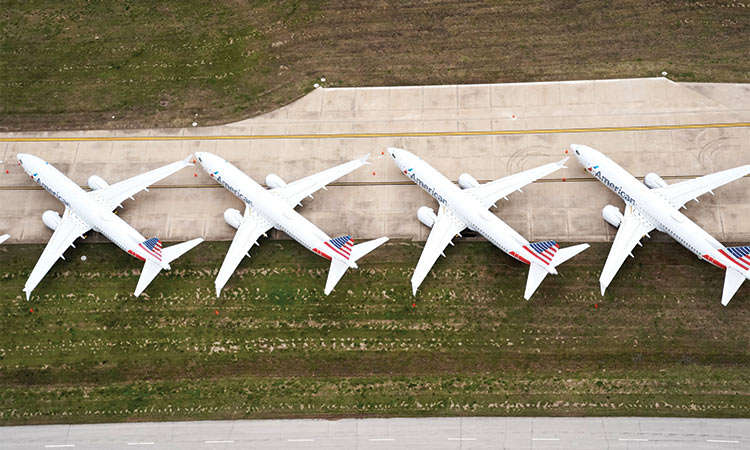
The COVID-19 pandemic has reshaped the global travel landscape and US no-frills carriers are pouncing, aviation experts said. As legacy airlines shrink to contain costs, budget carriers Spirit Airlines, Allegiant Travel and privately-owned Frontier Airlines are resuming pilot hiring and expanding networks to seize turf dominated by larger rivals.
The three airlines’ combined US market share, which barely topped 10% before the pandemic, could grow by 10 percentage points this year alone, said René Armas Maes of UK-based consultancy MIDAS Aviation.
“Ultra low-cost carriers want to attack head-to-head; they believe they’re in a better position to rebuild travel demand,” he said.
Las Vegas-based Allegiant has told prospective pilots whose hiring was halted as the pandemic unfolded: “We have recalled all of our furloughed pilots and are now planning for exciting growth opportunities.”
Spirit and Frontier have posted pilot job ads and are taking delivery of Airbus A320neo jets that could open longer routes, including coast-to-coast flying traditionally controlled by legacy, or full-service, carriers.
By contrast, American Airlines has gone from hiring 100 pilots a month before the pandemic to threatening 1,850 furloughs without fresh government assistance on labour costs.
Allegiant also stands to benefit if Congress approves a third round of COVID-19 payroll relief for US airlines, but “would be just fine without it,” Chief Financial Officer Greg Anderson told Reuters.
“The leading indicators suggest that there is a nice growth trajectory for Allegiant,” said Anderson, citing Google searches, indices that track changes in city populations and infection and vaccination trends from the Institute for Health Metrics and Evaluation.
He said customer surveys also show an increased preference for smaller airports and non-stop flights, cornerstones of budget carriers’ business models.
Ultra low-cost carriers, or ULCCs, offer a no-frills experience at rock-bottom fares and charge heavily for extras like bags. They wage fare wars and are pervasive in Europe’s fragmented market but have lagged in the United States.
ULCCs are a tier below carriers like Southwest Airlines, which pioneered the low-cost concept in the 1970s and has grown to become the leading domestic airline. It provides free beverages and checked bags but keeps costs low in part by flying a single fleet-type of Boeing 737s. US mainline legacy carriers American, Delta Air Lines and United Airlines have diverse fleets that include expensive wide-body jets geared for the kind of business and international travel that has suffered most in the pandemic.
American’s unit costs excluding fuel, a key metric of efficiency, were $0.18 per available mile in 2020, more than double that of budget rivals like Allegiant, according to data compiled by financial services firm Raymond James.
This means Allegiant, which primarily uses second-hand planes and only flies on peak travel days like weekends, can more easily profit on discount fares.
And whereas legacy carriers use a hub-and-spoke network that shuttles people through costly big-city airports, the ULCC business model is based on point-to-point travel to smaller airports where they outsource much of their infrastructure.
Allegiant’s fixed costs account for just around a quarter of its total.
That flexibility helps budget carriers open new routes on a trial-and-error basis. During the pandemic, for example, they have pivoted toward beach and mountain destinations.
“Then if the route is not performing, they won’t hesitate to shut it down,” said George Dimitroff of consultants Ascend by Cirium. But there are risks.
American, United and Delta have also shifted flights during the pandemic to pick up leisure demand and their market power and geographical reach remain formidable.
Competing with them can lure upstart airlines into relaxing cost discipline – a move described as a “path to hell” by budget airlines entrepreneur Bill Franke, who championed the ULCC model.
Together the three large airlines control around 60% of domestic travel and could chase away rivals on smaller routes if they choose, industry critics said.
But they are more burdened by debt than the ULCCs and continue to burn through millions of dollars every day, hampering their ability to grow, the critics said.
Budget airlines with low debt are also using the crisis to snap up bargains on used planes hitting the market from bankruptcies abroad, traders said, allowing them to extend their cost advantage.
Allegiant, with an average fleet age of 14 years, is eyeing deals on aircraft between eight and 12 years-old, Anderson said, noting: “Prices are well-discounted off pre-COVID.”
Beyond low fares, experts said the pandemic has given budget carriers a fresh argument for previously wary customers.
Traditional airline perks like catering services have lost their luster in an era of masks, and budget airplanes feature the same hospital-grade aircraft filtration systems as others.












